Applications of a Semi-Crystalline Thermoplastic Constitutive Model to Mechanical Responses of Electronic Connector Structures
Abstract
:1. Introduction
2. Materials and Methods
2.1. Experiments
2.2. Simulations
3. Results and Discussion
4. Conclusions
Author Contributions
Funding
Institutional Review Board Statement
Informed Consent Statement
Data Availability Statement
Conflicts of Interest
References
- Colak, U. Modeling deformation behavior of polymers with viscoplasticity theory based on overstress. Int. J. Plast. 2005, 21, 145–160. [Google Scholar] [CrossRef]
- Dusunceli, N.; Colak, O.U. Modelling effects of degree of crystallinity on mechanical behavior of semicrystalline polymers. Int. J. Plast. 2008, 24, 1224–1242. [Google Scholar] [CrossRef]
- Ayoub, G.; Zaïri, F.; Naït-Abdelaziz, M.; Gloaguen, J.M. Modelling large deformation behaviour under loading–unloading of semicrystalline polymers: Application to a high density polyethylene. Int. J. Plast. 2010, 26, 329–347. [Google Scholar] [CrossRef]
- Barba, D.; Arias, A.; Garcia-Gonzalez, D. Temperature and strain rate dependences on hardening and softening behaviours in semi-crystalline polymers: Application to PEEK. Int. J. Solids Struct. 2020, 182, 205–217. [Google Scholar] [CrossRef]
- Bernard, C.A.; Lame, O.; Deplancke, T.; Cavaill´e, J.Y.; Ogawa, K. From rheological to original three-dimensional mechanical modelling of semi-crystalline polymers: Application to a wide strain rate range and large deformation of Ultra-High Molecular Weight PolyEthylene. Mech. Mater. 2020, 151, 103640. [Google Scholar] [CrossRef]
- Xu, L.; Cheng, C.; Du, C.; Jiang, Z.; Du, Z.; Gao, G. Semi-Crystalline Polymers Applied to Taylor Impact Test: Constitutive, Experimental and FEM Analysis. Polymers 2020, 12, 1615. [Google Scholar] [CrossRef] [PubMed]
- Torres, J.P.; Frontini, P.M.; Machado, M. Deformation and failure of semicrystalline polymers under dynamic tensile and biaxial impact loading. Int. J. Impact Eng. 2016, 98, 52–61. [Google Scholar] [CrossRef]
- Gearing, B.P.; Anand, L. On modeling the deformation and fracture response of glassy polymer due to shear-yielding and crazing. Int. J. Solids Struct. 2004, 41, 3125–3150. [Google Scholar] [CrossRef]
- Krairi, A.; Doghri, I. A thermodynamically-based constitutive model for thermoplastic polymers coupling viscoelasticity, viscoplasticity and ductile damage. Int. J. Plast. 2014, 60, 163–181. [Google Scholar] [CrossRef]
- Fedulov, B.N.; Safonov, A.A.; Kantor, M.M.; Lomov, S.V. Modelling of thermoplastic polymer failure in fiber reinforced composites. Compos. Struct. 2017, 163, 293–301. [Google Scholar] [CrossRef]
- Smith, M. ABAQUS User’s Manual, Version 6.16; Dassault Systèmes Simulia Corp.: Johnston, RI, USA, 2016. [Google Scholar]
- Arruda, E.M.; Boyce, M.C. A three-dimensional constitutive model for the large stretch behavior of rubber elastic materials. J. Mech. Phys. Solids 1993, 41, 389–412. [Google Scholar] [CrossRef] [Green Version]
- Smith, M. Isight 2016 User’s Manual; Dassault Systèmes Simulia Corp.: Johnston, RI, USA, 2016. [Google Scholar]
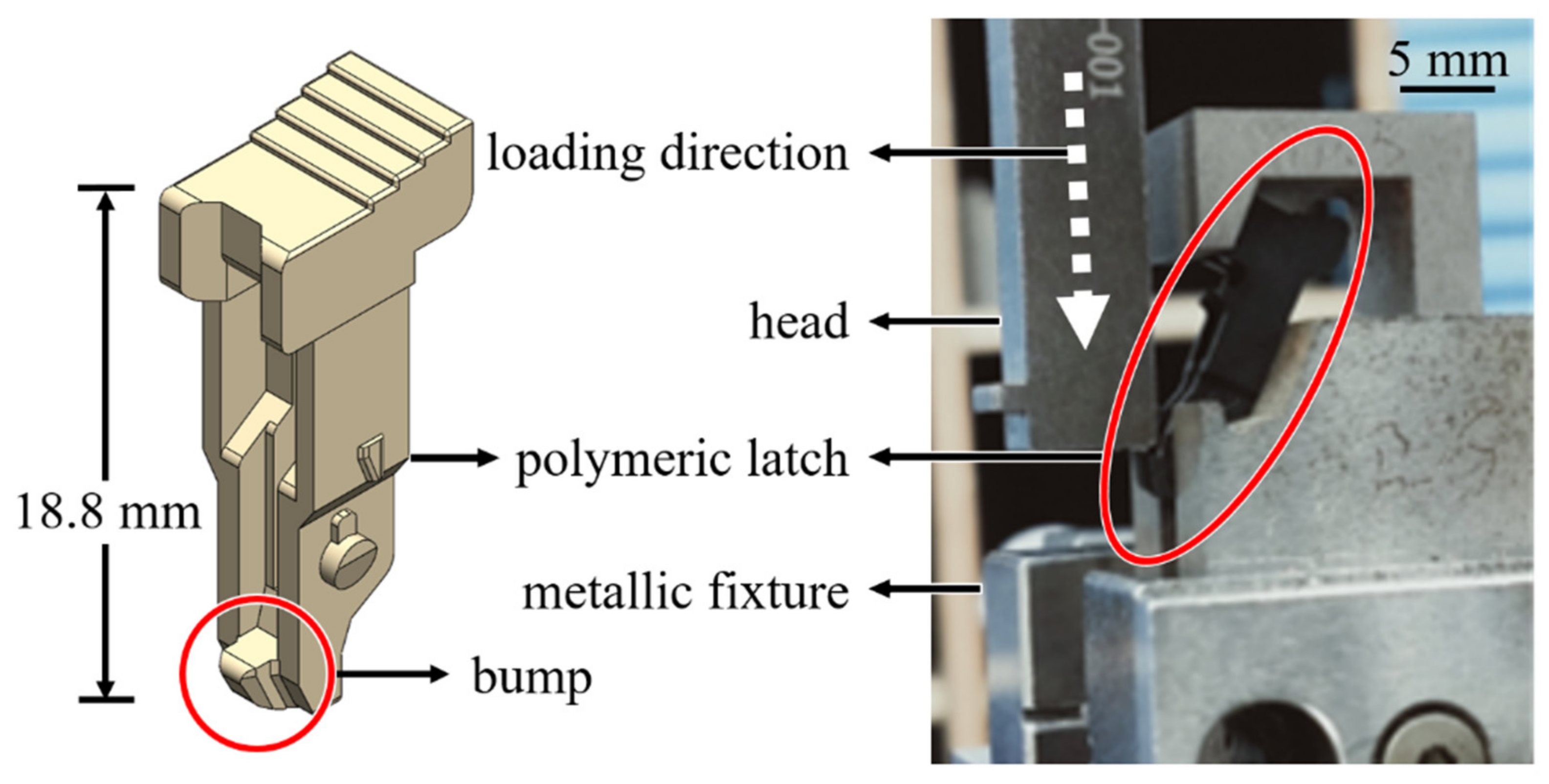
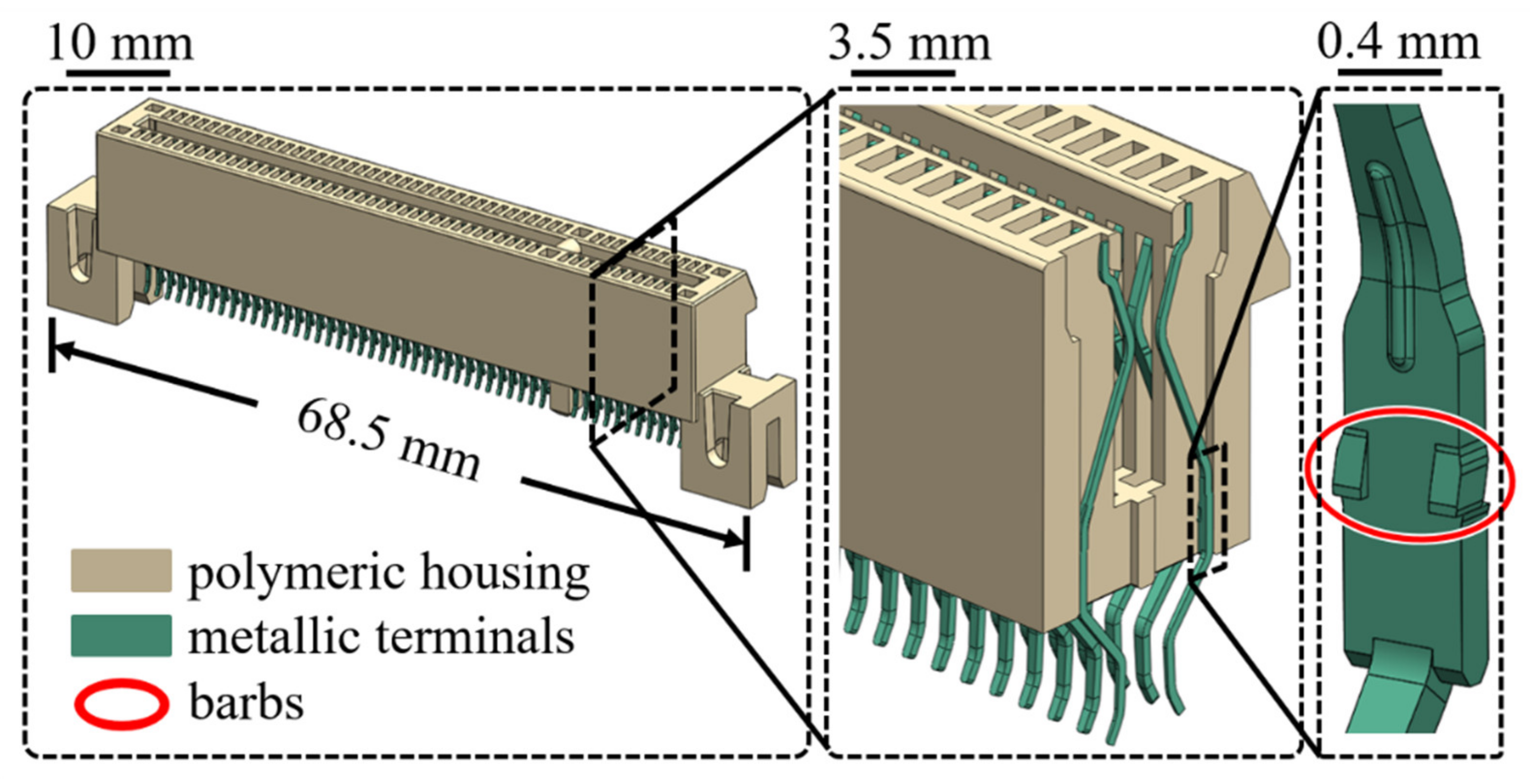

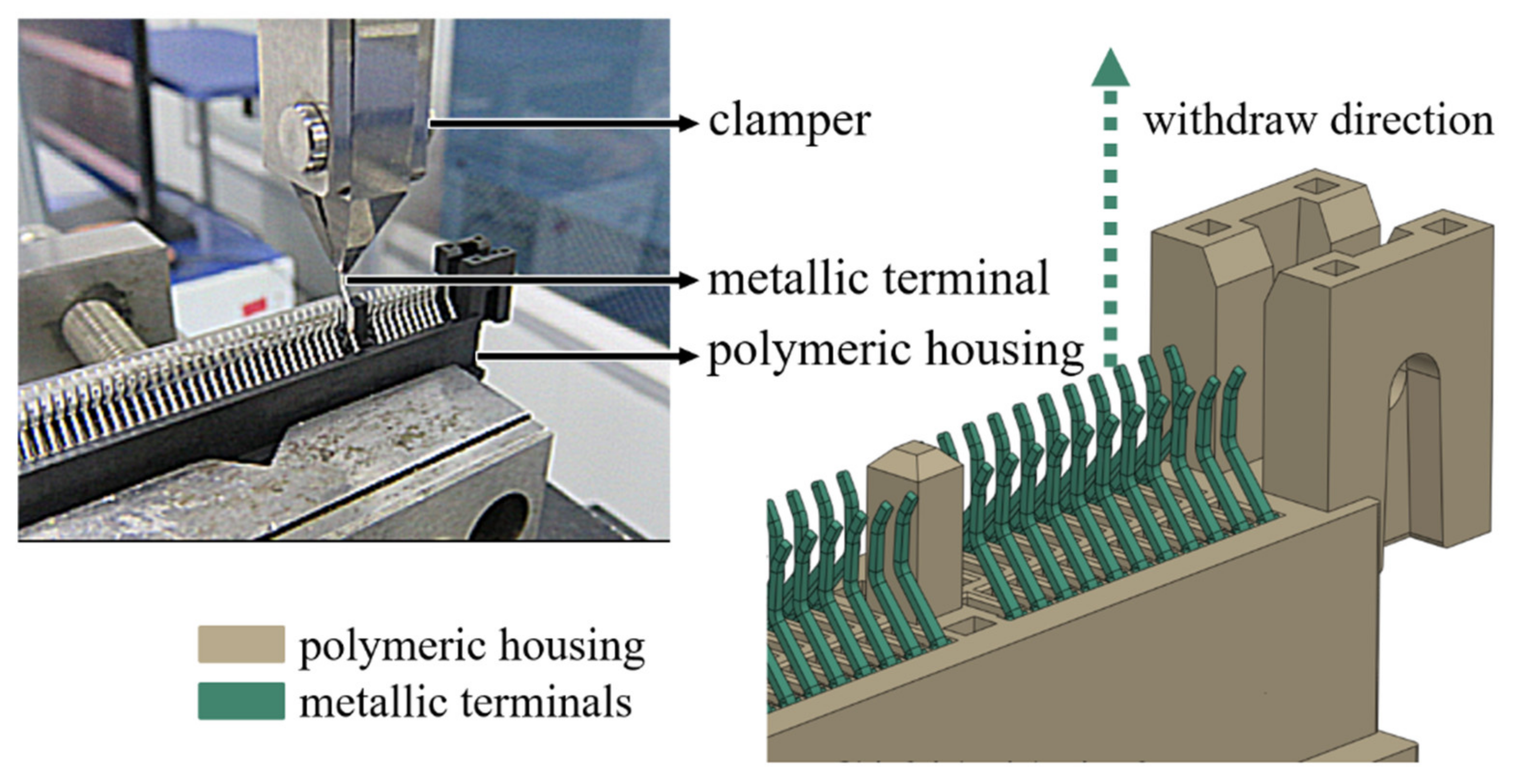
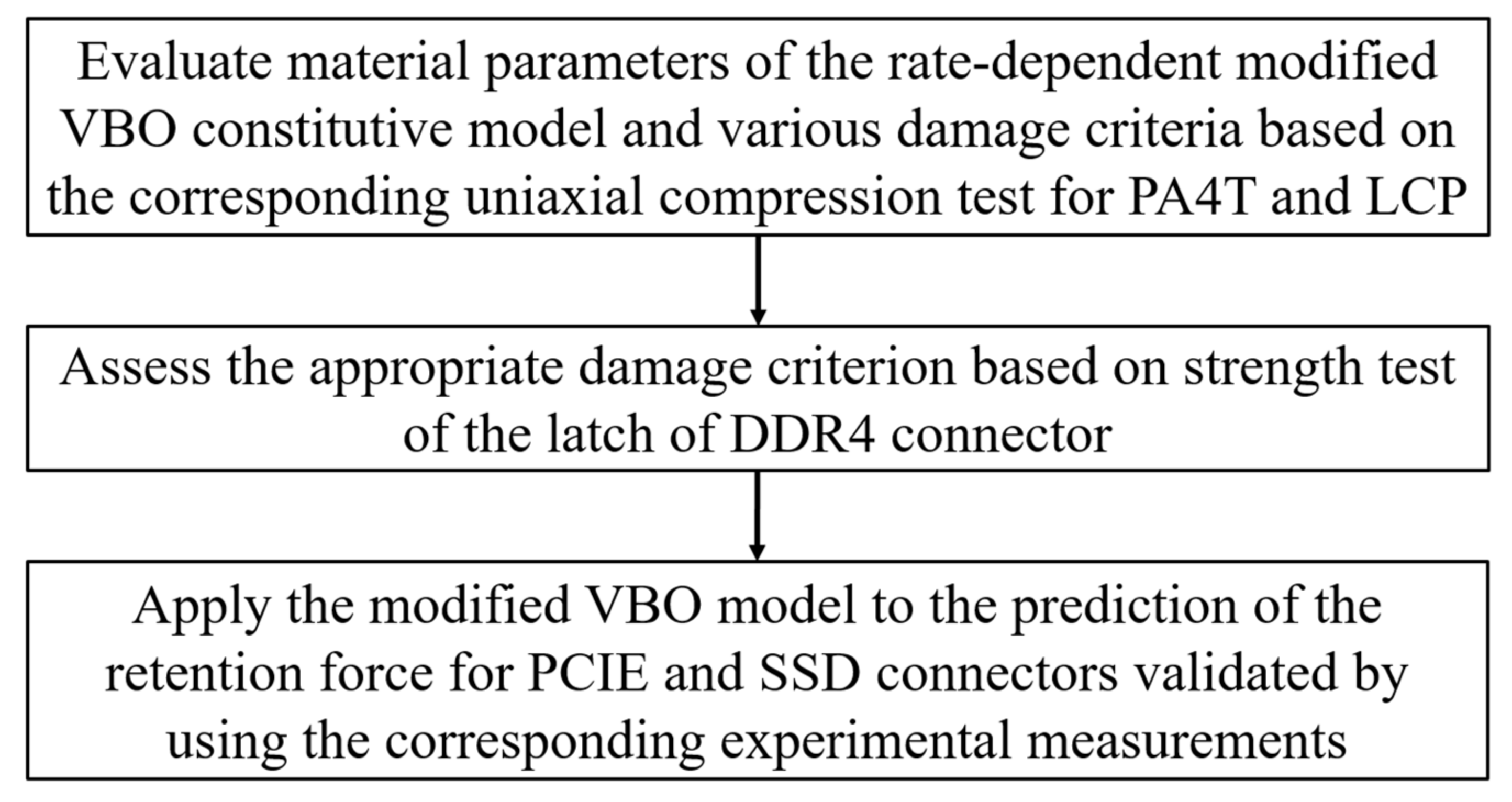
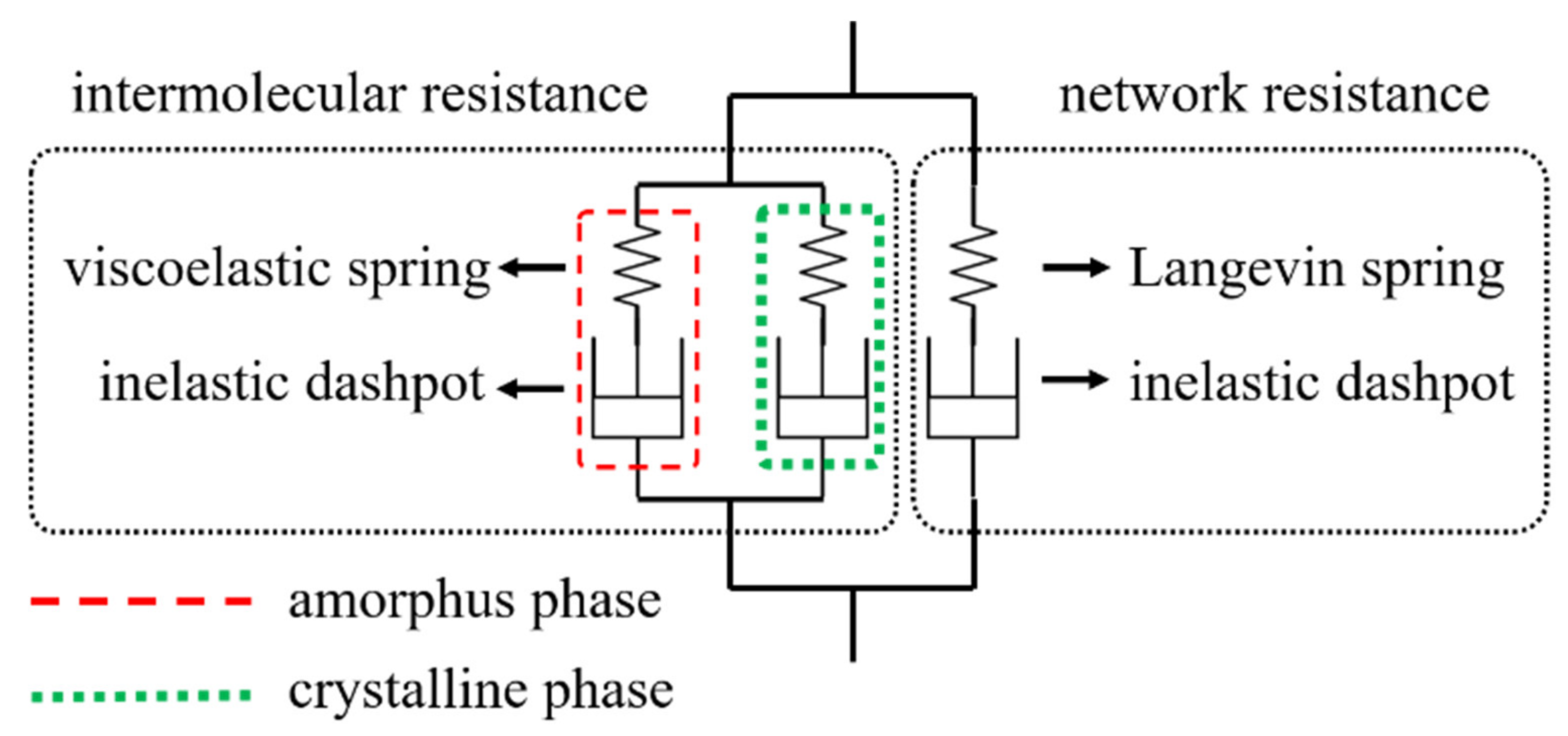
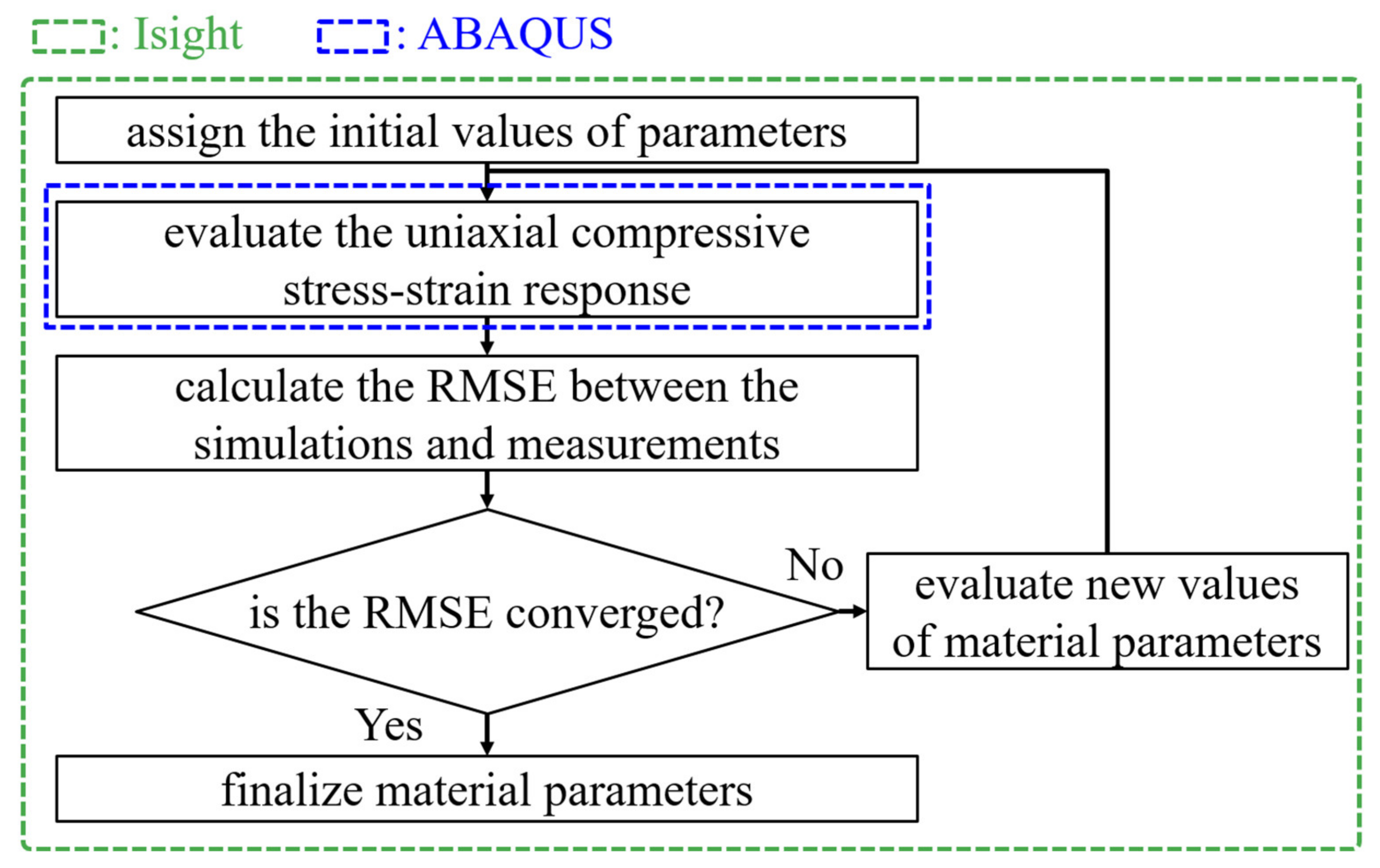
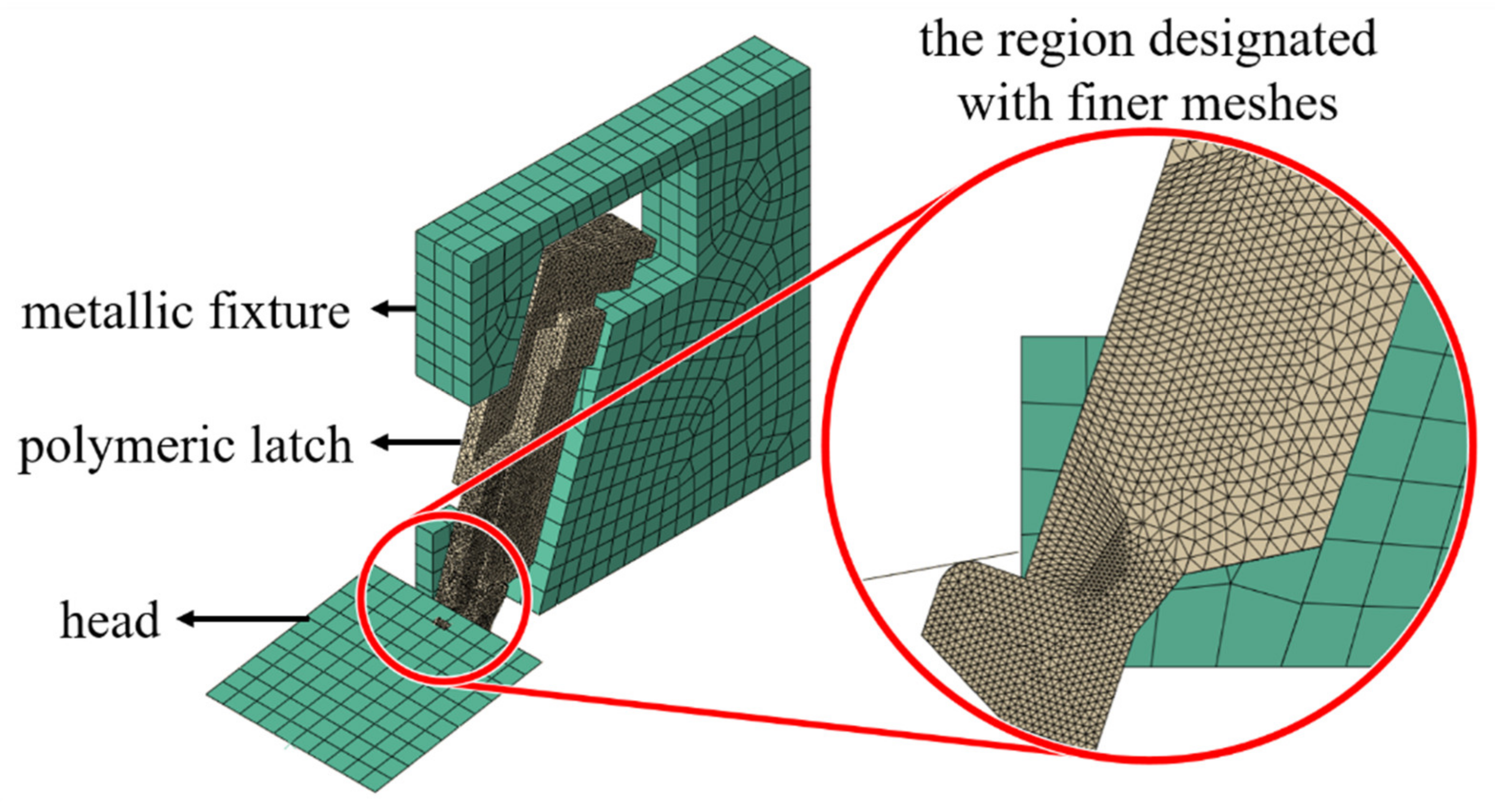
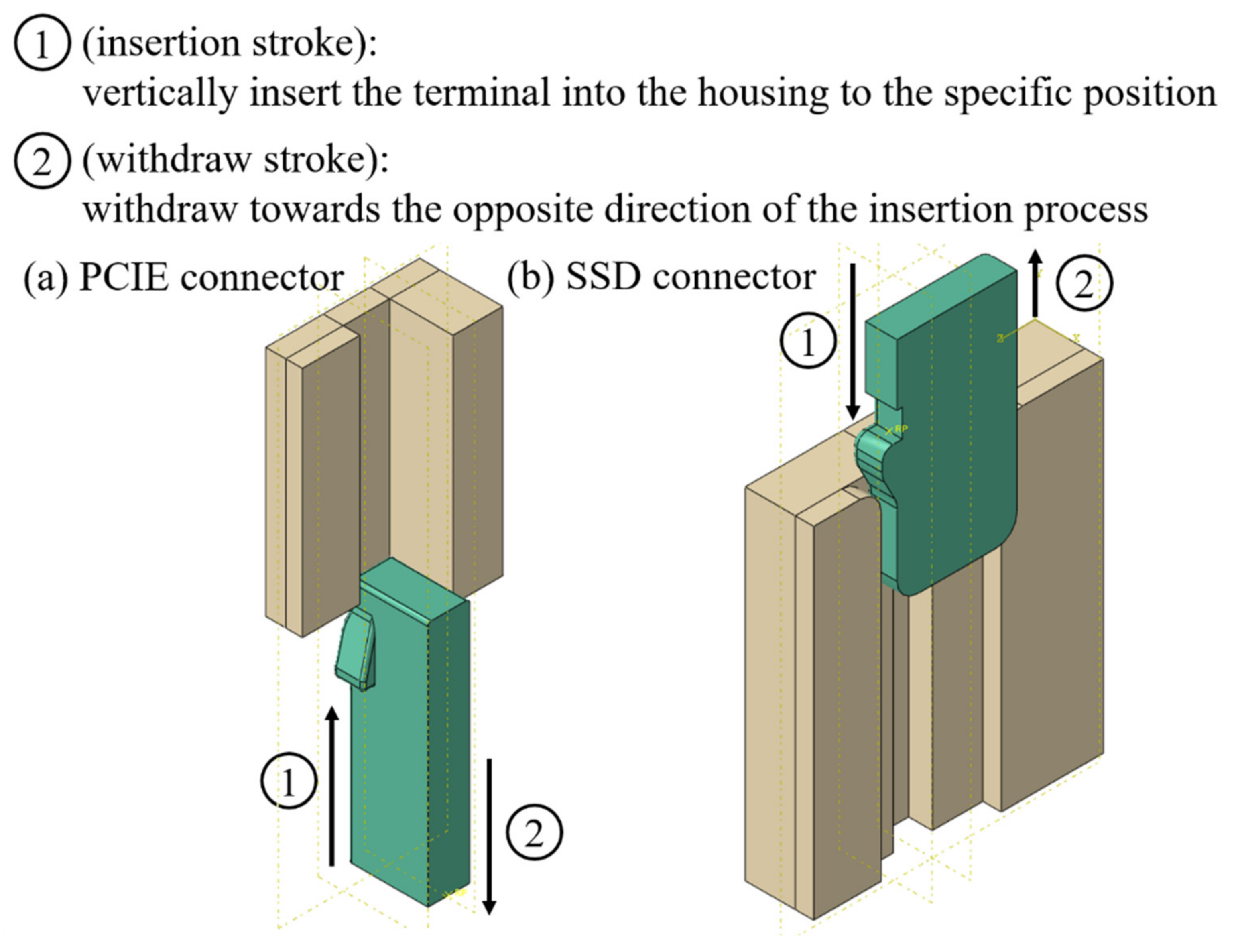
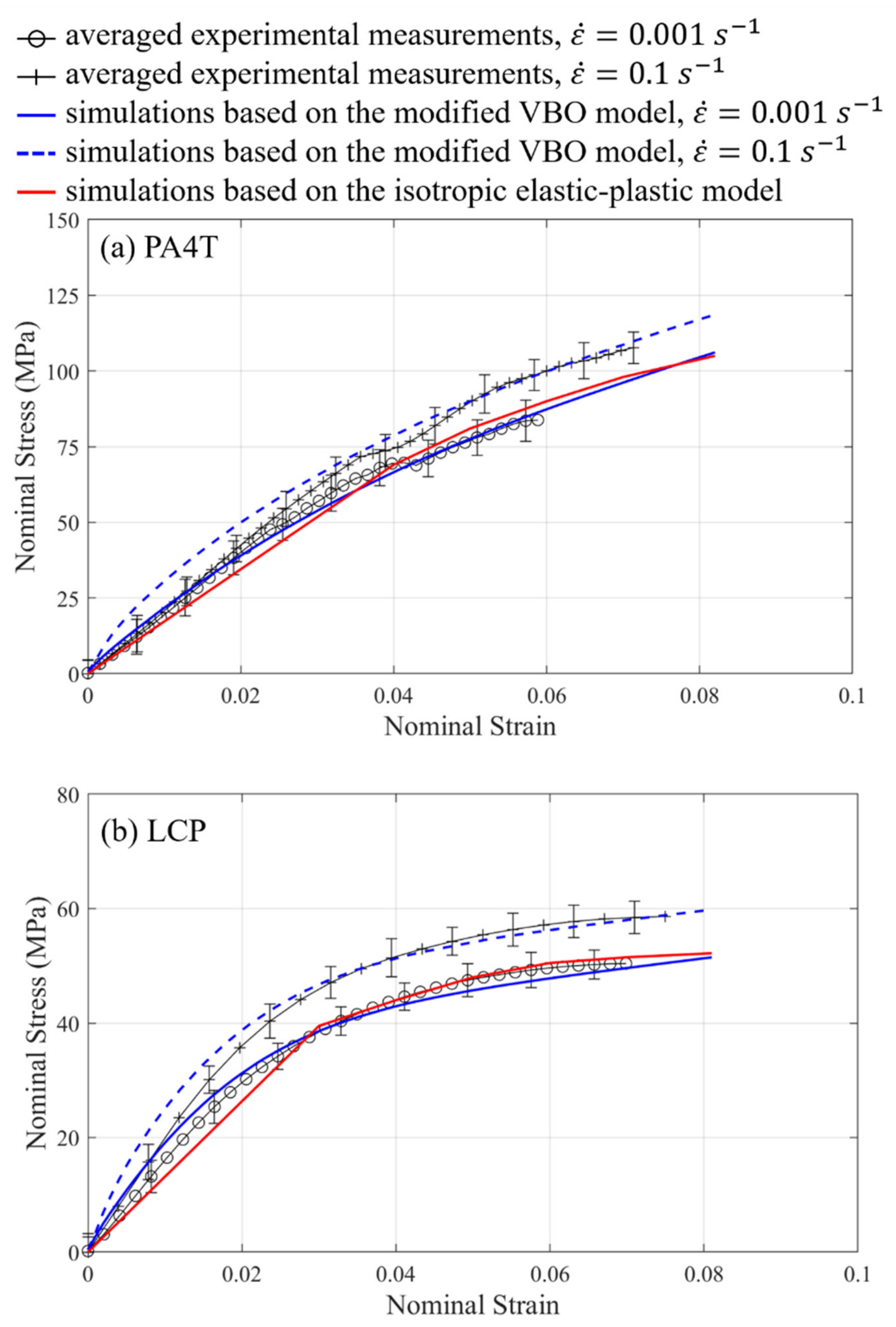
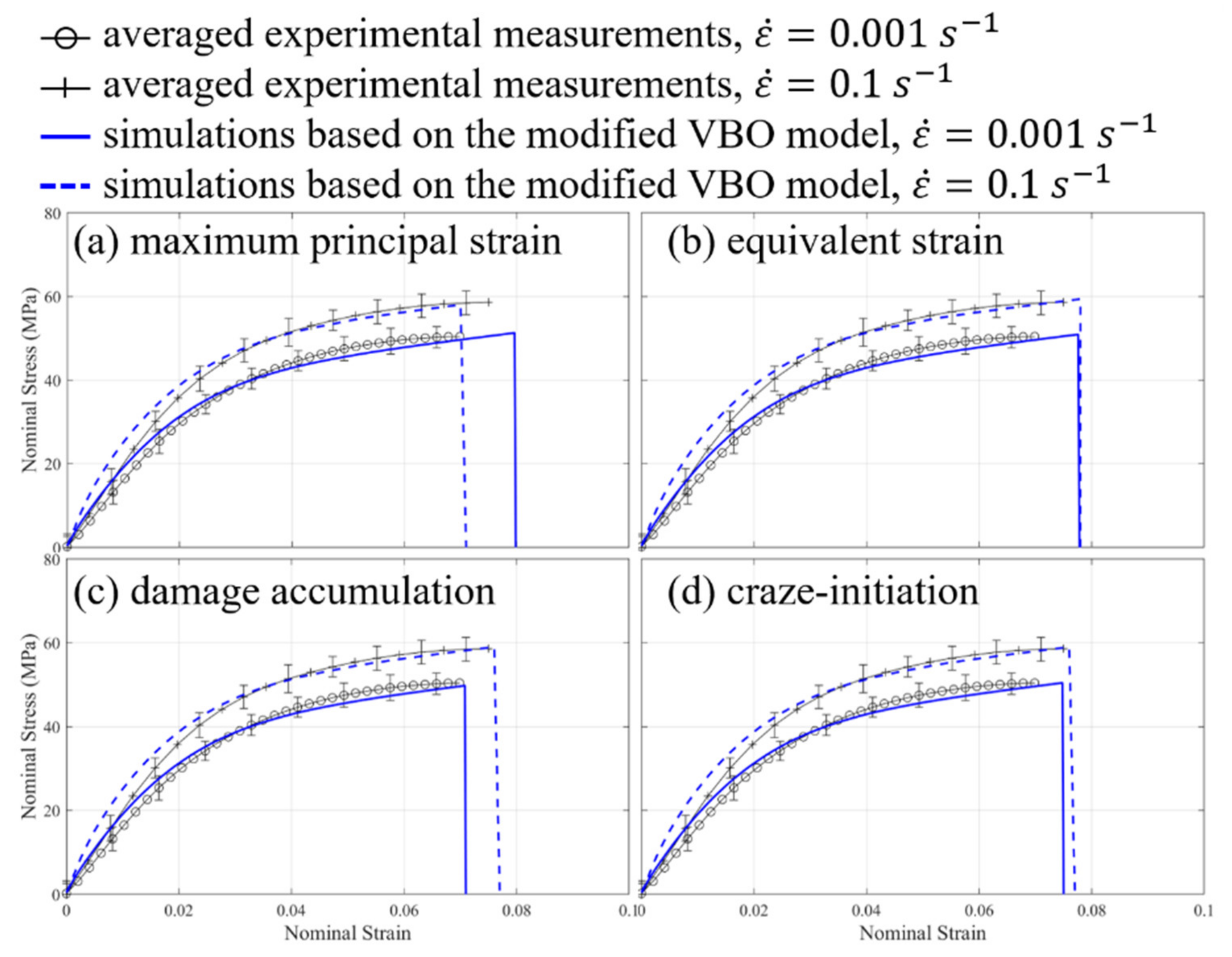
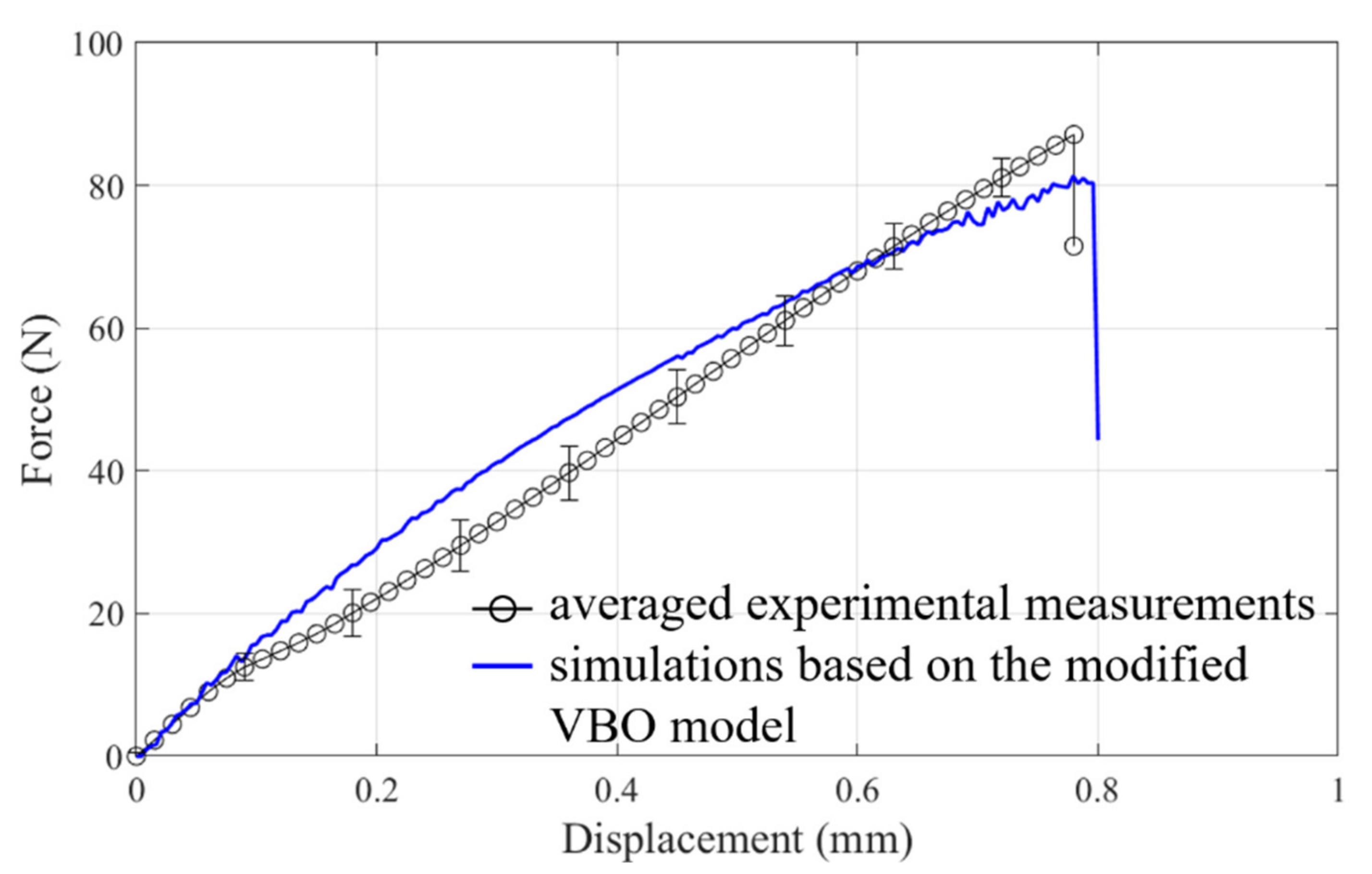

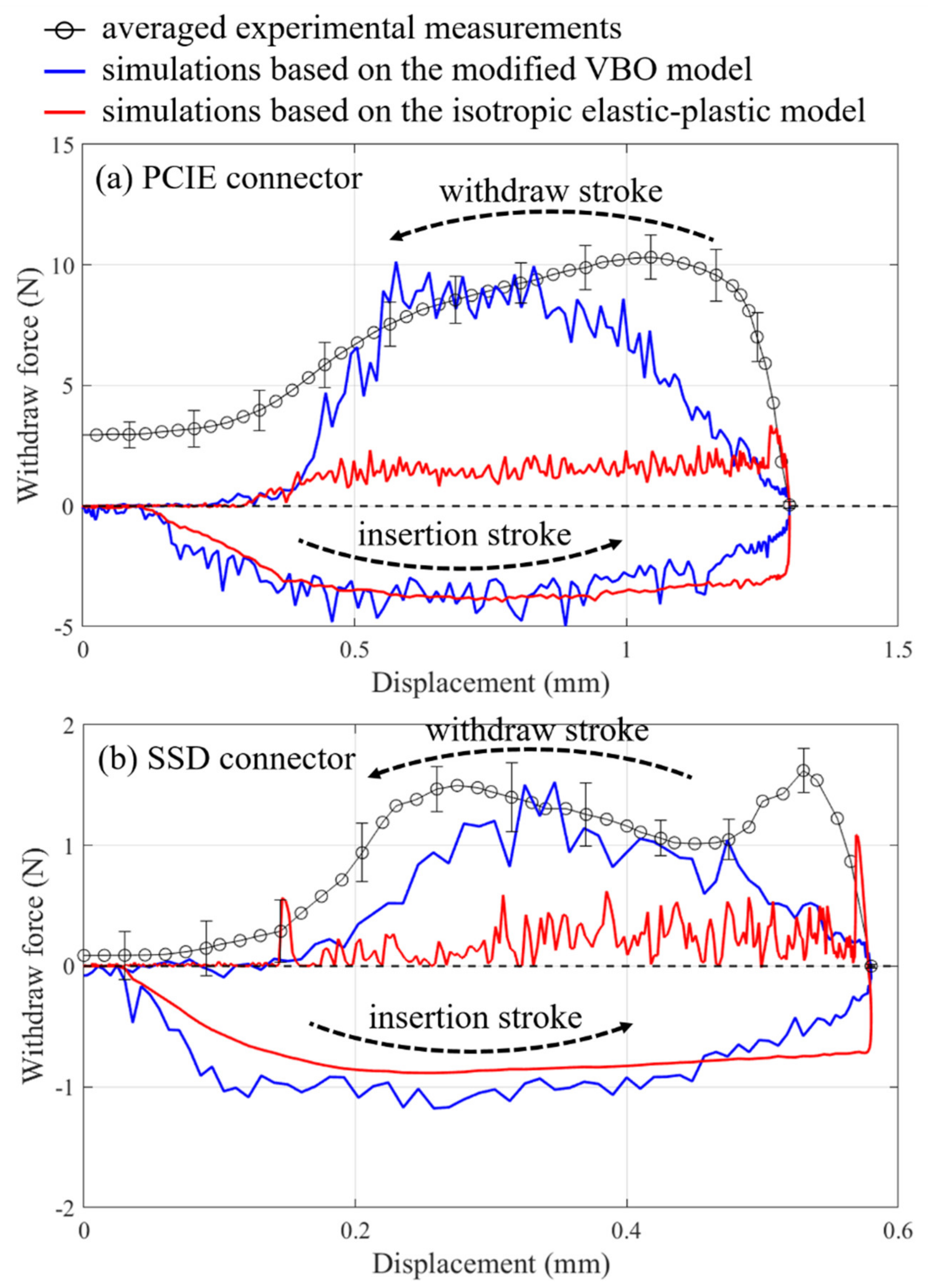
| Description | Parameter | Parameter Value | |
|---|---|---|---|
| – | – | PA4T | LCP |
| Volume fraction of the crystalline phase | 0.66 | 0.66 | |
| Young’s modulus | 666.7 MPa | 533.3 MPa | |
| 1333.3 MPa | 1066.7 MPa | ||
| Poisson’s ratio | 0.4 | 0.4 | |
| Drag stress | 40 MPas | 25 MPas | |
| Viscosity coefficient | 2.8 | 2.6 | |
| 2.2 | 2.3 | ||
| Tangent modulus | 200 MPa | 10 MPa | |
| Material constants | 0.45 | 0.70 | |
| 2 | 2.5 | ||
| 200 MPa | 60 MPa | ||
| Shape coefficients | 80 MPa | 180 MPa | |
| 80 MPa | 200 MPa | ||
| 200 MPa | 230 MPa | ||
| 3000 MPa | 3000 MPa | ||
| 25 s | 15 s | ||
| 5 | 5 | ||
| 3 MPa−1 | 3 MPa−1 | ||
| Rubbery modulus | 2.1 MPa | 2.1 MPa | |
| Entanglement density | 100 | 100 | |
| Damage Criterion | Parameter | Parameter Value | |
|---|---|---|---|
| – | – | PA4T | LCP |
| Maximum principal strain | 0.069 | 0.093 | |
| Equivalent viscoplastic strain | 0.076 | 0.073 | |
| Damage accumulation | 0.041 | 0.049 | |
| 1.18 | 1.42 | ||
| 0.751 | 0.923 | ||
| Craze-initiation | 69.3 MPa | 77.6 MPa | |
| 532 MPa2 | 707 MPa2 | ||
| Damage Criterion | Retention Forces | |
|---|---|---|
| – | PCIE | SSD |
| Averaged experimental measurements | 10.58 ± 1.15 N | 1.78 ± 0.17 N |
| Maximum principal strain | 11.6 N | 0.77 N |
| Equivalent viscoplastic strain | 11.9 N | 1.27 N |
| Damage accumulation | 10.3 N | 1.53 N |
| Craze-initiation | 10.2 N | 1.19 N |
Publisher’s Note: MDPI stays neutral with regard to jurisdictional claims in published maps and institutional affiliations. |
© 2021 by the authors. Licensee MDPI, Basel, Switzerland. This article is an open access article distributed under the terms and conditions of the Creative Commons Attribution (CC BY) license (https://creativecommons.org/licenses/by/4.0/).
Share and Cite
Huang, T.-C.; Liao, K.-C. Applications of a Semi-Crystalline Thermoplastic Constitutive Model to Mechanical Responses of Electronic Connector Structures. Materials 2021, 14, 5812. https://doi.org/10.3390/ma14195812
Huang T-C, Liao K-C. Applications of a Semi-Crystalline Thermoplastic Constitutive Model to Mechanical Responses of Electronic Connector Structures. Materials. 2021; 14(19):5812. https://doi.org/10.3390/ma14195812
Chicago/Turabian StyleHuang, Ting-Chuan, and Kuo-Chi Liao. 2021. "Applications of a Semi-Crystalline Thermoplastic Constitutive Model to Mechanical Responses of Electronic Connector Structures" Materials 14, no. 19: 5812. https://doi.org/10.3390/ma14195812





